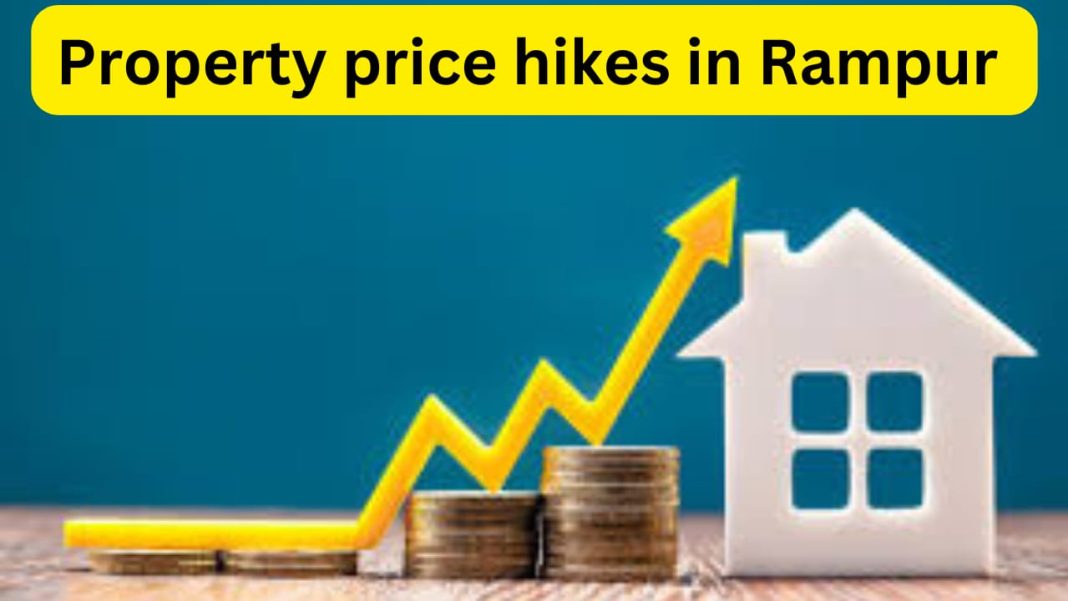Digital News Desk:
Starting from October 21, 2024, property buyers in Rampur, Uttar Pradesh, will face higher costs as the district’s circle rates for property transactions are set to increase by 10-12%. This hike affects a wide range of real estate, including residential homes, commercial shops, and land plots. Circle rates, which are the minimum rates at which properties can be registered, serve as the government’s benchmark for property valuation and stamp duty calculations. With this rise, purchasing property in Rampur will become more expensive, impacting buyers and the overall real estate market in the region.
This development has significant implications for both local buyers and the broader property market in Rampur, as it mirrors trends of rising property prices seen across many parts of India. The price hike has raised questions about affordability, real estate investment, and economic growth in the area. To understand the full scope of this change, it’s essential to look at the reasons behind the circle rate hike, its effects on various stakeholders, and the long-term outlook for Rampur’s property market.
What Are Circle Rates and Why Are They Important?
Circle rates, also known as guidance values or ready reckoner rates in some regions, are the minimum price at which a property can be sold or transferred. These rates are set by the government and vary depending on the location, property type, and market conditions. The purpose of circle rates is to regulate the real estate market, ensuring that property transactions reflect a fair value and are not grossly underreported to evade taxes. Circle rates also play a crucial role in determining the stamp duty and registration fees paid by buyers and sellers during property transactions.

In the case of Rampur, the decision to increase circle rates by 10-12% reflects the district administration’s attempt to align the official property values with the market trends. This adjustment is often made when property prices in the market have risen faster than the circle rates, leading to discrepancies between the two values. By increasing the circle rates, the government aims to curb underreporting of property values, boost revenue from stamp duty, and ensure that real estate transactions are more transparent.
Reasons Behind the Circle Rate Hike in Rampur
Several factors may have contributed to the recent hike in circle rates in Rampur:
- Market Growth: Rampur, like many districts in Uttar Pradesh, has witnessed steady urbanization and infrastructure development in recent years. Improved connectivity, new business opportunities, and growing demand for residential and commercial properties have driven real estate prices upwards. The government’s decision to increase circle rates aligns with the market growth and rising property values in the region.
- Revenue Generation: Governments rely on property-related transactions as a source of revenue through stamp duty and registration fees. By increasing the circle rates, the administration can generate more income from property sales, which can be used to fund infrastructure and public services. This hike may be part of a broader effort by the Uttar Pradesh government to increase its revenue base through real estate transactions.
- Curbing Black Money: In many cases, properties are sold at a higher price than the officially recorded circle rate, with part of the transaction being conducted in cash to avoid taxes. Raising circle rates helps reduce the incentive for underreporting property values, making it harder to use real estate for black money transactions.
Impact on Buyers and Sellers
The hike in circle rates will have both immediate and long-term effects on property buyers and sellers in Rampur.
- Increased Property Costs: For buyers, the increase means higher upfront costs when purchasing a property. Since stamp duty and registration fees are calculated as a percentage of the property’s value based on the circle rate, even a small increase in the circle rate can translate into a significant rise in transaction costs. This can deter first-time homebuyers or those looking to invest in real estate as prices become less affordable.
- Seller Expectations: For sellers, the hike in circle rates may result in higher expectations for property values. Since the minimum value of properties has been set higher by the government, sellers may demand higher prices to match the official rates, which could further inflate property prices in the area.
- Slower Real Estate Transactions: In the short term, the price hike could lead to a slowdown in the real estate market, as buyers take time to adjust to the new rates and assess their financial capacity to meet the increased costs. This may particularly affect middle-income and lower-income buyers, who may find it more challenging to purchase property at the new, higher rates.

Long-Term Effects on Rampur’s Real Estate Market
In the long run, the circle rate hike in Rampur could lead to several outcomes:
- Stabilization of Property Prices: While the immediate effect of the price hike may be a slowdown in transactions, over time, it could lead to greater price stability in the market. With circle rates closer to actual market prices, there will be less scope for underreporting and manipulation of property values. This could bring more transparency and fairness to real estate transactions in Rampur.
- Improved Infrastructure and Services: The additional revenue generated from higher stamp duty could be used to fund infrastructure projects and improve public services in the district. Better roads, schools, and healthcare facilities could make Rampur more attractive to homebuyers and investors, further boosting the real estate market in the future.
- Shift in Investment Patterns: The increase in circle rates may prompt some buyers to explore alternative investment options, such as neighboring districts or other regions where property prices are still more affordable. This could lead to a redistribution of demand in the regional real estate market, with certain areas benefiting from increased interest.
You May Also Read: Odisha and West Bengal Prepare for Cyclone Dana: Schools Closed and Evacuations Underway in Eastern India








